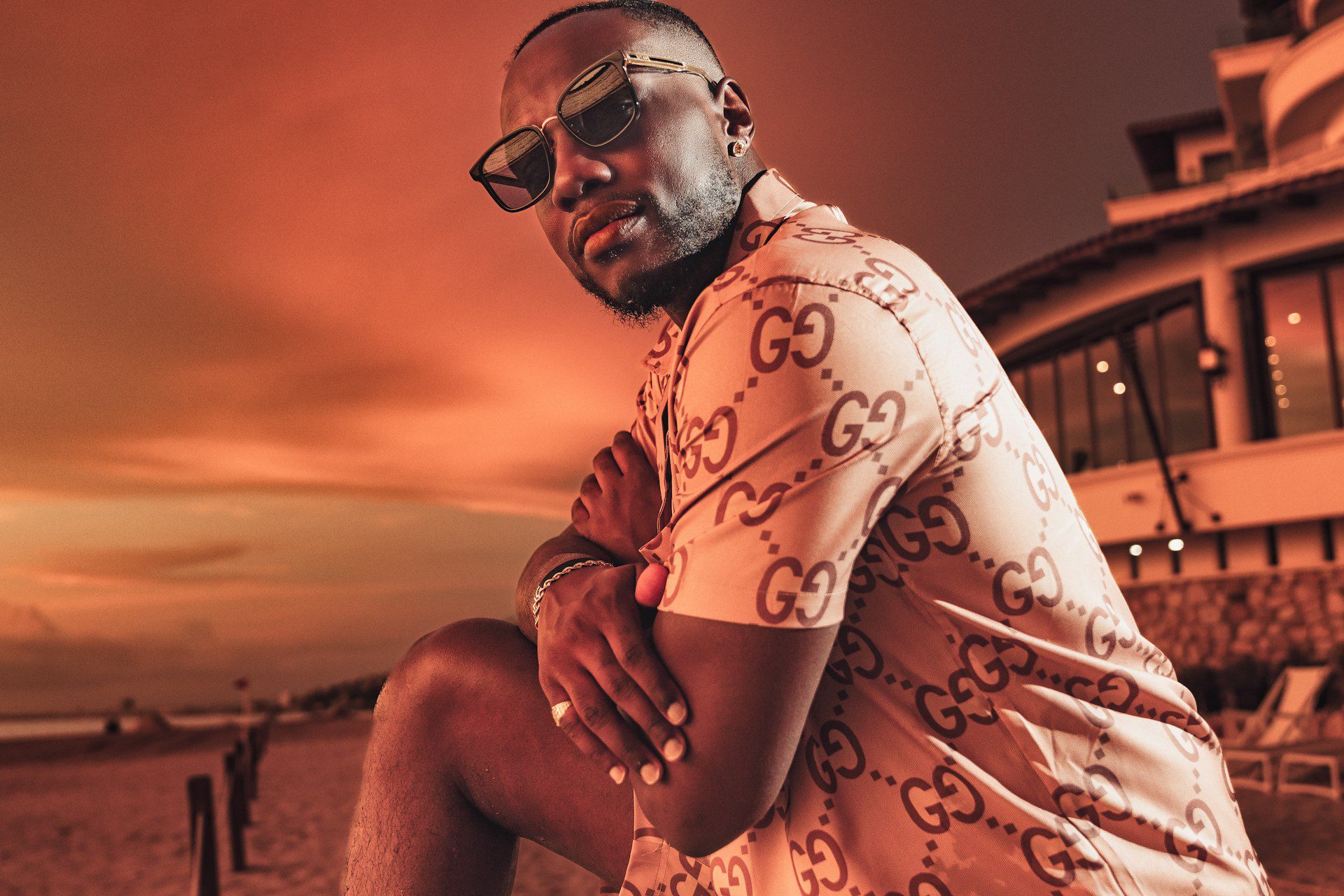Let’s be honest: fashion is more than just clothing—it’s communication. The way you dress tells people who you are before you even open your mouth. But while fashion can be empowering, blindly following trends can backfire hard. You might think you’re staying current, but you could be wearing something that screams, “I tried too hard!” or worse, “I have no idea what I’m doing.”
In today’s world of rapid style cycles and social media influence, it’s easier than ever to fall into fashion traps. Trends come and go faster than ever, and what looked cool a season ago can now feel embarrassingly outdated. That’s why it’s crucial to know which fashion trends are more of a liability than an asset—especially for men trying to nail a sharp, timeless look.
Avoiding fashion faux pas isn’t about being boring or playing it safe. It’s about developing a personal style that lasts longer than a TikTok trend. This article will walk you through the men’s fashion trends you should absolutely skip, and what to do instead to keep your wardrobe stylish, practical, and true to you.
Overly Distressed Jeans
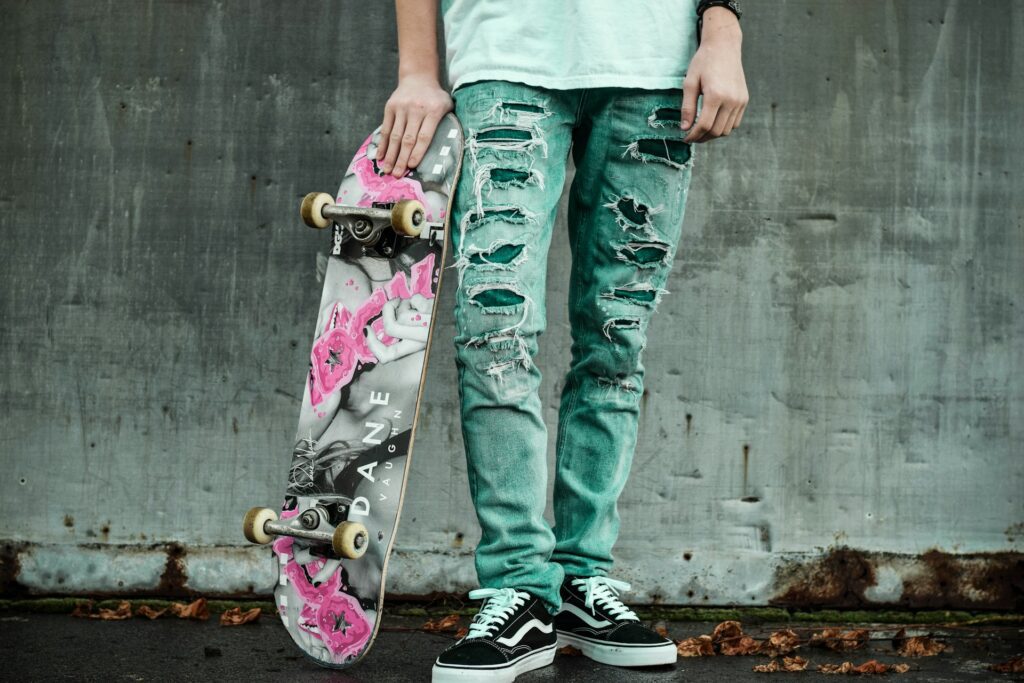
Distressed jeans had their moment of glory, and hey, they weren’t all bad. A little fraying at the edges or a tasteful rip at the knee can add character. But we’ve now entered an era where some jeans look like they survived a zombie apocalypse—and that’s not a good look.
The problem with overly distressed jeans is that they often come off as trying too hard to look edgy or rebellious. Huge holes, massive knee gashes, and shredded thighs can make you look like a fashion victim instead of someone with a strong sense of personal style. Worse, they can appear sloppy, especially when paired with otherwise put-together outfits.
There’s also a functional issue: overly ripped jeans don’t wear well. The rips get larger over time, the fabric weakens, and suddenly your $100 fashion statement turns into a wardrobe malfunction waiting to happen. In professional or semi-formal environments, these jeans are a complete no-go.
So, what’s the alternative? Opt for dark wash jeans or classic denim with light distressing. Look for slim or straight-leg fits that flatter your frame without going overboard. You can even go for selvedge denim if you’re feeling a bit premium. These styles are versatile and can be dressed up or down with ease.
Super Skinny Jeans
Once upon a time, skinny jeans were the gold standard for modern style. They offered a sleek silhouette and gave off that rockstar vibe. But as with all good things, the fashion world has moved on. Super skinny jeans, especially the ones that look painted on, are officially out.
First off, let’s talk comfort—or lack thereof. Skin-tight jeans restrict movement, emphasize the wrong body parts, and create an unflattering silhouette for most body types. They can make your legs look disproportionately small and your torso unnaturally bulky. Not to mention, they can feel downright suffocating.
Beyond aesthetics and comfort, the super skinny trend is no longer “in.” Fashion has shifted toward more relaxed fits that prioritize comfort while still looking sharp. Think slim-tapered, athletic fit, or even a straight-leg cut. These give you room to breathe while maintaining a streamlined look.
The goal isn’t to ditch fitted clothing altogether. It’s about finding jeans that work with your body, not against it. You want your pants to flatter—not fight—your physique. So, trade those spray-on jeans for something more balanced and timeless. Your legs (and style game) will thank you.
Overbranding and Logo Overload
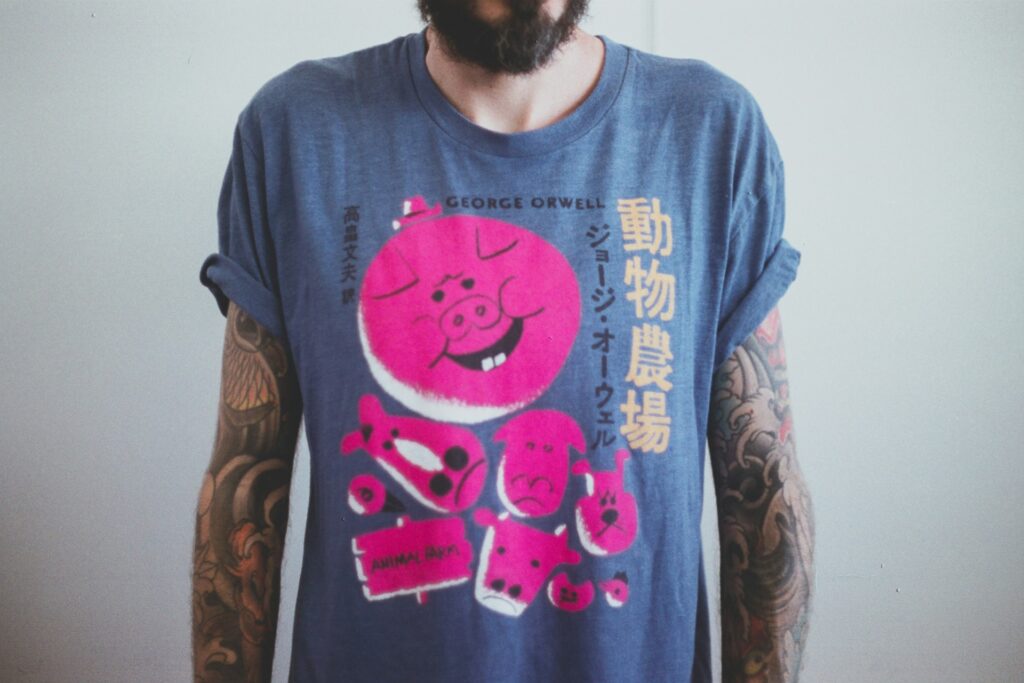
Brand loyalty is fine. Rocking your favorite label now and then? Totally cool. But turning yourself into a walking billboard? That’s a different story.
In the early 2000s, logos were everywhere. People wore shirts, caps, belts, and even shoes plastered with oversized designer emblems. Fast forward to today, and that trend has (thankfully) faded. Yet some men still fall into the trap of thinking the more logos, the better.
Let’s be real: wearing ten different logos doesn’t make you look rich—it makes you look desperate for attention. Fashion is about expression, not screaming for validation. And believe it or not, the most stylish men are often the most understated. Subtle details, quality materials, and perfect fit outshine logos any day.
Instead of chasing brand recognition, focus on building a cohesive wardrobe with neutral tones, clean cuts, and timeless essentials. Think minimalist tees, well-tailored chinos, and leather shoes that don’t need a big logo to stand out. If you want to wear a logo, make it small, tasteful, and on a piece that speaks for itself.
Remember: confidence isn’t found in a designer label—it’s in how you wear it.
Excessive Accessories
Accessories can make or break an outfit. A good watch, a pair of shades, or a sleek bracelet can add flair and personality. But too much of a good thing? That’s where many men cross the line from stylish to gaudy.
Let’s paint the picture: a man wearing three gold chains, two watches (yes, people do this), ten rings, and oversized sunglasses—indoors. He might think he looks like a rapper or influencer, but most people are thinking the exact opposite. It comes across as try-hard, flashy, and frankly, distracting.
The golden rule of accessorizing? Less is more. You want your accessories to complement your look, not steal the show. Choose 1–2 standout pieces and build from there. A classic wristwatch, a leather bracelet, or even a simple chain can elevate your outfit when worn tastefully.
Also, think about the occasion. What works for a night out might not fly in a professional setting. Context matters. Learn to balance, match metals and materials, and keep things proportional to your body type and outfit style. Subtle accessories show confidence and thoughtfulness, while excess screams insecurity.
Sagging Pants
The sagging pants trend has a long, controversial history. Originating in U.S. prison culture, it eventually moved into hip-hop fashion and streetwear, symbolizing rebellion and nonconformity. While it once had cultural meaning, today it’s largely seen as outdated and unflattering. Most people perceive sagging pants as sloppy and careless, making it one of the top fashion trends men should avoid.
Sagging pants can ruin your overall silhouette. When your waistband is hanging below your hips or even lower, it throws off your body’s proportions. Your legs appear shorter, your posture slouches, and you lose the structured look that well-fitting clothes provide. Beyond aesthetics, sagging can be uncomfortable, forcing you to constantly adjust your pants just to keep them from falling further.
From a practical standpoint, sagging doesn’t fit modern men’s fashion anymore. Most style icons and influencers have moved toward tailored, sharp, and more refined casual wear. Even streetwear brands now favor better-fitting jeans, joggers, or cargo pants designed to sit properly on the waist while still maintaining a relaxed vibe.
The best alternative is finding pants that offer a comfortable, secure fit without needing to sag. Slim-fit jeans, modern cargo pants, or athletic-fit chinos provide freedom of movement and a clean look. Using a belt properly can also enhance style while keeping things functional. Dressing with confidence starts with clothes that fit—ditch sagging and choose structure over sloppiness.
Deep V-Neck Shirts
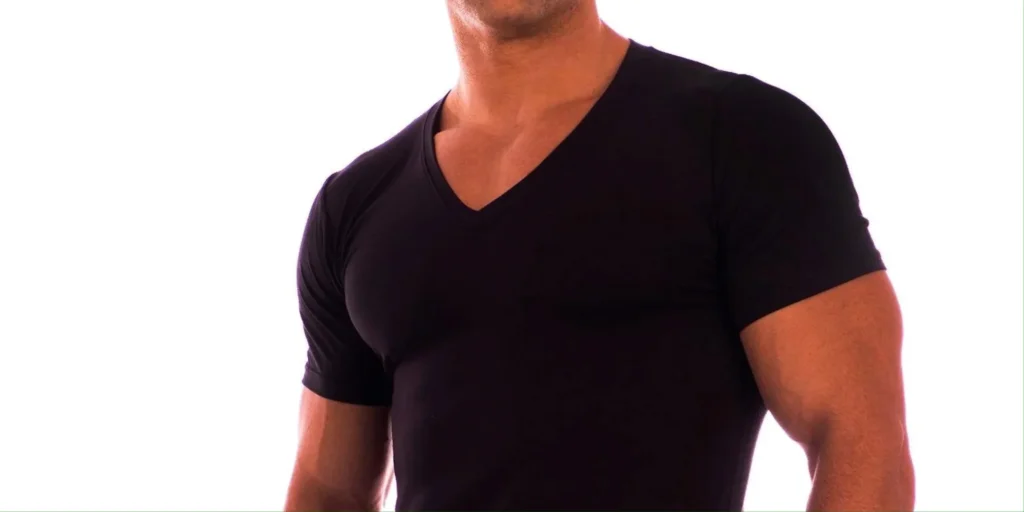
There’s a fine line between fashionable and awkward when it comes to V-neck shirts. A shallow V-neck can highlight the chest area nicely and add shape to your upper body. But deep V-neck shirts—those plunging styles that nearly reach the stomach—cross into fashion disaster territory.
Deep V-necks were briefly popular during the early 2010s, embraced by some clubwear brands and gym-goers wanting to showcase their physique. However, the look quickly became overdone and is now widely considered tacky. Instead of looking stylish, deep V-necks often make you appear like you’re trying too hard to show off muscles or body hair.
This trend also creates imbalance in your outfit. The deep cut visually elongates the torso but leaves the neck and shoulders looking awkwardly proportioned. It can also make layering difficult, limiting your style versatility. On top of that, it’s not appropriate for many settings—imagine wearing one to a casual dinner or family event.
A much better choice is sticking to classic crewnecks or shallow V-necks that hint at your build without overexposing. Henley shirts are another great alternative, offering a bit of chest definition with a button-down opening that you can adjust. These styles are timeless, versatile, and work well on nearly every body type, keeping you stylish without the cringeworthy deep cuts.
Overly Flashy or Shiny Fabrics
Standing out is great; looking like a human disco ball—not so much. Overly shiny clothing, such as metallic jackets, glittery shirts, or glossy pants, tends to be more costume-like than fashionable. While these fabrics occasionally work in high-fashion editorials or themed parties, they don’t translate well to everyday wear.
The issue with flashy fabrics is that they dominate your entire outfit. Instead of enhancing your appearance, they become the sole focus, making you appear less stylish and more desperate for attention. They also photograph poorly under certain lights, causing glare and making textures look cheaper than they actually are.
Most modern menswear embraces matte finishes, textured fabrics, and understated tones. For instance, high-quality wool, cotton, linen, and denim provide a more refined and elegant look without screaming for the spotlight. If you want to add a bit of shine, do it subtly—through accessories like cufflinks, a watch, or polished shoes. Leather jackets with a natural sheen are another tasteful option.
Fashion is about balance. A single statement piece can work if paired with neutral basics, but an entire outfit of shiny material quickly veers into tacky territory. Swap out metallics for timeless fabrics that feel good, look sophisticated, and won’t blind anyone in direct sunlight.
Muscle Fit Clothing for Everyone
Muscle-fit clothing is often marketed as a way to look athletic and sharp. These shirts and polos hug every inch of your torso, highlighting chest and arm muscles. But here’s the truth: muscle-fit clothing only works for a small percentage of men, and even then, it’s easy to overdo.
For those without a heavily sculpted physique, these tight-fitting pieces can feel constricting and emphasize areas you’d rather not showcase. Even for muscular men, wearing muscle fit everything—shirts, polos, even blazers—makes outfits look unnatural and uncomfortable. Instead of stylish, you risk appearing like you’re trying to flex constantly.
Modern fashion leans toward tailored rather than tight. Tailored fits contour to your body while allowing movement and breathability. They enhance your build subtly without clinging to every muscle fiber. Slim-fit dress shirts, for instance, offer a flattering shape without feeling suffocating.
If you’ve worked hard at the gym and want to show it off, pick your moments wisely. A well-fitted T-shirt or polo is enough to highlight your physique without crossing into over-the-top territory. The key is moderation—let your confidence and posture do the talking, not an ultra-tight shirt that looks painted on.
Socks with Sandals

Few trends spark as much ridicule as socks with sandals. While fashion has become more experimental and some designers have attempted to make it “cool,” the reality is that this combo still clashes visually for everyday wear. It’s often associated with lazy styling or “dad on vacation” vibes, making it a trend most men should avoid.
The problem is simple: sandals are designed for warm weather and breathability, while socks are meant for warmth and coverage. Combining them sends a confusing style message and breaks the natural flow of an outfit. It also disrupts proportions, making your feet look bulky or mismatched.
If you love the comfort of socks, there are better alternatives. Opt for closed shoes like sneakers or loafers when you want to wear socks. For sandal lovers, go sockless and ensure your feet are well-groomed. Leather sandals or slides worn barefoot look much cleaner and more intentional.
Fashion-forward individuals sometimes pull off socks with sandals on runways or street-style shoots, but these are carefully styled exceptions—not the rule. For most men looking to build timeless style, skipping this trend is the safest bet.
Mismatched Patterns and Loud Prints
Mixing patterns can show confidence and style mastery—but when done wrong, it’s a fast track to looking chaotic. Many men mistakenly think that wearing bold prints together automatically makes an outfit trendy or fashionable. Instead, mismatched patterns often clash, drawing negative attention and making you appear like you dressed in the dark.
The problem isn’t with patterns themselves; it’s about balance and harmony. Pairing stripes with plaid or wearing multiple animal prints in one outfit overwhelms the eye. Similarly, loud prints with overly bright colors can make you stand out for all the wrong reasons. Fashion experts agree: bold prints should be handled with care and moderation.
The solution is pattern coordination. Start small by mixing one patterned piece with solid-colored basics. For example, a floral shirt pairs beautifully with neutral trousers. Stripes can work with checks if they share a similar color palette and vary in scale. Accessories like patterned ties or pocket squares can add personality without overpowering your look.
Think of patterns as seasoning in cooking—a pinch elevates the dish, but too much ruins it. By choosing one statement print and keeping the rest of your outfit balanced, you’ll achieve style confidence without looking mismatched or overly loud.
Too Much Athleisure
Athleisure—clothing designed for athletic activity but worn casually—has revolutionized men’s fashion. Joggers, hoodies, and sneakers now appear in more settings than just the gym. While this comfort-driven trend is great, taking it too far can make your wardrobe look lazy instead of stylish.
The mistake many men make is turning athleisure into their only style. Constantly wearing sweatpants, oversized hoodies, and running shoes can signal that you’ve given up on dressing intentionally. While this look works for errands or workouts, it lacks the refinement needed for dinners, social events, or professional environments.
The best approach is blending athleisure with smarter pieces. Swap plain sweatpants for tailored joggers or structured chinos. Combine a fitted hoodie with a sleek bomber jacket and leather sneakers. This fusion maintains comfort while showing you care about your appearance.
Remember, even athleisure should fit well. Baggy gym shorts and stretched-out T-shirts don’t read as fashion—they read as neglect. Elevating your casual wear by mixing sporty elements with polished staples keeps you stylish without sacrificing comfort.
Outdated Trends Still Lurking
Fashion has its fair share of trends that once ruled but now deserve retirement. Some men cling to these outdated looks, thinking they’re still in style when, in reality, they’re relics of past decades. Common offenders include fedoras with casual outfits, Ed Hardy graphic tees, oversized cargo shorts, and flashy clubwear from the early 2000s.
The danger with outdated trends is that they instantly timestamp your outfit, making you look stuck in the past. Even if you love a particular style, wearing it unchanged from its peak era doesn’t translate to modern fashion. Trends evolve, and staying stylish means adapting rather than holding onto old looks.
To refresh your style, audit your wardrobe. Identify pieces that scream a specific outdated era and either retire or modernize them. For example, instead of oversized cargo shorts, opt for tailored utility shorts. Swap a fedora for a classic baseball cap or a minimalist beanie. Replace loud graphic tees with subtle printed or plain high-quality shirts.
Fashion is cyclical, but it returns in new forms. Understanding when a trend is truly back versus when it’s simply outdated can keep you looking current without being a victim of nostalgia-driven mistakes.
Fake Luxury Items
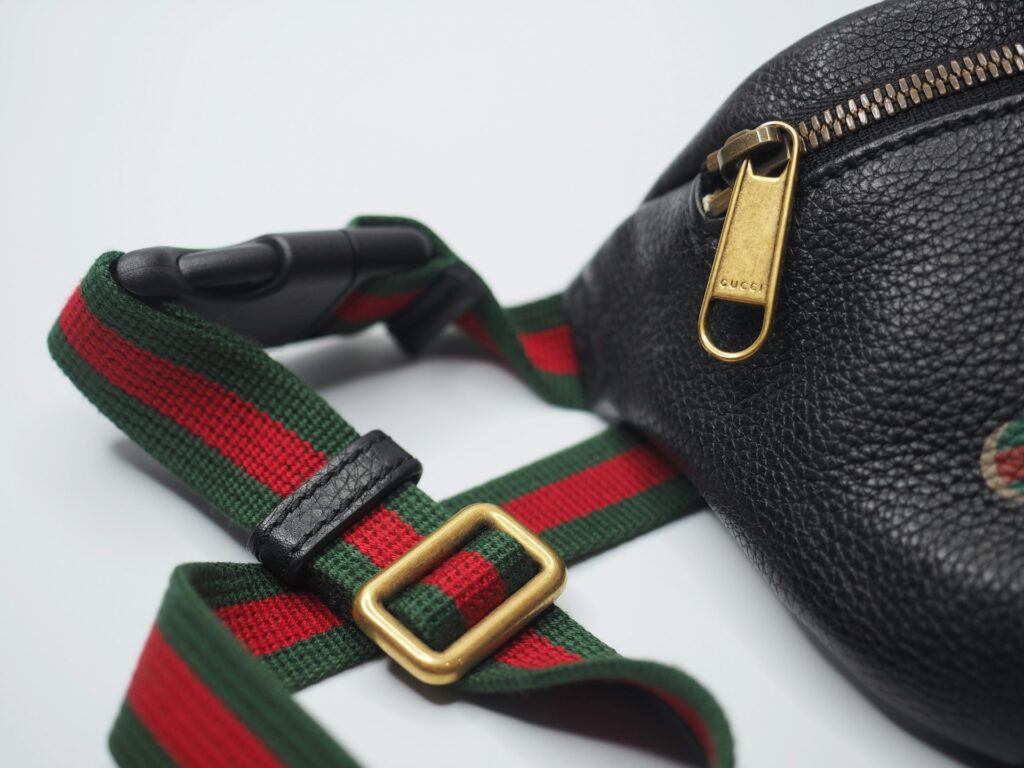
Wearing fake designer goods might seem like a budget-friendly way to look high-end, but it often has the opposite effect. Counterfeit bags, watches, or sneakers are usually poorly made, easily spotted, and can damage your credibility. Instead of appearing stylish, fake items signal inauthenticity and insecurity.
Beyond appearance, there are ethical issues. The counterfeit industry funds illegal operations and undermines genuine craftsmanship. Supporting this market doesn’t help your fashion game—it hurts both the industry and your personal brand.
True style doesn’t require luxury labels. Many affordable brands offer high-quality, well-designed clothing without fake logos. A well-fitted $50 blazer often looks better than a counterfeit $500 designer jacket. Investing in timeless essentials, even if they’re not high-end, gives you a polished look that feels real and intentional.
If you genuinely admire designer pieces, save up for one authentic item rather than buying multiple fakes. A single genuine leather belt or watch can elevate your wardrobe far more than several counterfeits ever could. Confidence and authenticity always outshine pretense.
Ignoring Grooming as Part of Fashion
No matter how expensive or trendy your clothes are, poor grooming can ruin your entire look. Neglecting haircuts, facial hair maintenance, skincare, and even basic hygiene makes any outfit appear sloppy. Style isn’t just fabric—it’s the whole presentation.
Consider how celebrities and well-dressed men maintain their image. Perfectly tailored suits look great partly because they’re complemented by neat hair, a clean shave or well-kept beard, and healthy skin. Ignoring grooming gives off an impression of carelessness, making even stylish clothing look unkempt.
Basic grooming doesn’t require much effort. Regular haircuts, beard trims, moisturizing, and proper nail care go a long way. Choosing hairstyles and facial hair that suit your face shape enhances your overall style effortlessly. Skincare routines prevent dullness and ensure you look fresh and confident.
Fashion and grooming are inseparable. Think of grooming as the frame that completes a picture. Without it, even the most fashionable outfit can’t reach its full potential.
Conclusion
Fashion should enhance your personality, not overshadow it with gimmicky or outdated trends. Men who blindly chase every style fad risk losing their individuality and looking less confident. By avoiding these pitfalls—overly distressed jeans, sagging pants, logo overload, loud prints, fake luxury items, and neglecting grooming—you’ll create a wardrobe that’s both timeless and versatile.
True style isn’t about wearing everything that’s “in.” It’s about understanding what fits, what flatters, and what feels authentic. Confidence, subtlety, and attention to detail will always beat loud, fleeting trends. Dress smartly, groom well, and remember: simplicity and authenticity never go out of style.
FAQs
1. How do I know if a trend is outdated?
Look at current style icons, fashion magazines, and store displays. If a trend hasn’t been featured in several years and only appears in nostalgic memes or old photos, it’s likely outdated.
2. Is it okay to follow some fashion trends?
Yes, as long as you adapt them to your personal style and avoid going all-in on passing fads. Moderation keeps you current without looking like a trend chaser.
3. What should I focus on more than trends?
Fit, quality, and versatility matter more than any temporary trend. Invest in clothes that look good on your body, last long, and can be mixed with different outfits.
4. How do I find my own fashion style?
Experiment with different pieces, notice what feels comfortable and gets positive reactions, and build from there. Following classic, timeless staples is a great starting point.
5. Are minimalist styles more timeless?
Yes. Minimalist fashion focuses on clean lines, neutral colors, and simple designs, which rarely go out of style and can easily adapt to different settings.


